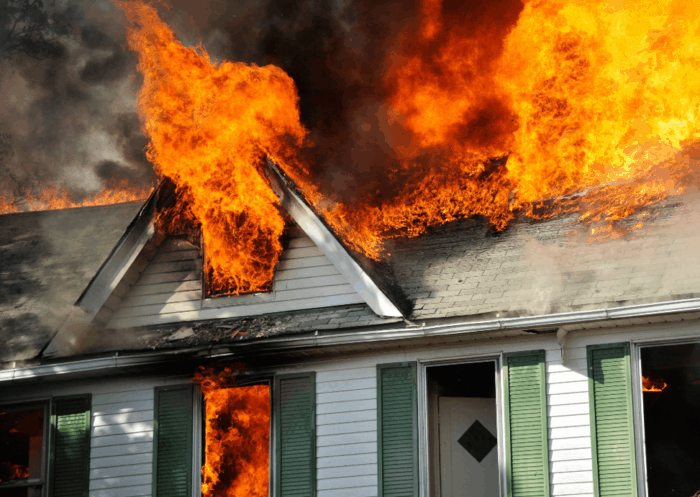The 8 Steps You Need to Take After a House Fire

After a house fire, you need to focus on rebuilding your life. Your home insurance policy will help you pay to repair or rebuild your home, replace personal property that was lost in the fire, and cover some of the additional living expenses added by displacement. Whether your home was lost in a natural disaster like a wildfire or your family suffered a house fire, your insurance policy can help you recover. Your priority for your family should be getting back on your feet and making things feel normal, especially for your kids. But you also need to start dealing with your insurance claim.
Following this 8-step checklist will help make sure you don’t miss anything when it comes to your fire insurance claim. You can also get help from Virani Law. We practice insurance law and help our clients get fair compensation from the insurance company.
1 File Your Claim in Writing
Immediately after the fire, call your insurance company and file your claim in writing. Inform them of your loss and start the process of getting your home insurance claim.
Once your claim has been filed, you will start dealing with an insurance adjuster hired by the insurance company. The insurance adjuster will assess the damage to your home and provide a preliminary estimate of the costs. They may interview you about pre-existing damage or maintenance. They may be motivated to minimize the payout from the company, which is why it helps to have someone on your side negotiating better compensation.
Give us a call and we call tell you what to expect from a home insurance adjuster so you’re ready to deal with them.
2 Request Your Long-Form Policy
Next, ask the insurance adjuster for a full copy of your insurance policy. This should include the declaration page.
Your declaration pages are essential for your lawyer or a public insurance adjuster (i.e., someone who works for you). Here at Virani Law, we put together a quick guide to reading declaration pages for important information:
- Determine who is insured; usually, they are named, but immediate family members can be insured without being named.
- Determine the address that’s insured and confirm that it’s the home that was damaged.
- Determine if the policy was in already in place at the time of the house fire.
- Determine if the type of loss is covered by the policy (i.e., fire, flood, wildfire, etc.).
- Double check that the premiums have been paid in full.
- Identify coverage for Structure, Personal Property, and Additional Living Expenses.
- Check to see whether “Guaranteed Replacement Cost” applies to both Structural and Personal Property sections.
- Find out what the deductible is.
- Find any unique clauses that are applicable or non-applicable to you, the policyholder.
Reading the declaration pages can be a challenge. Someone at Virani Law can help you find the answers you need about your policy in the declaration pages. All you have to do is get in touch with us and we can help you at any stage of your insurance claim. You need to know exactly what your insurance policy covers.
3 Take Photos and Organize them in a Folder
If your property has been declared safe for re-entry, take your own photos of the damage. In case you have a disagreement with the insurance adjuster, you have your own photos for reference.
You should also take a look through photos from family photo albums or social media. You may be able to use these photos when you’re proving lost personal property or the condition of the house before the fire.
4 Secure Sentimental Possessions
Now that you have access to your home, you will want to secure any sentimental possessions or possessions that have not been damaged by the fire. A house that has suffered from a fire may be open to the elements and possessions still inside could be vulnerable to cold or water damage. They may also be vulnerable to vandalism or looting, which is why you should both take steps to secure your home and take any possessions that could be lost or further damaged off-site.
5 Document Your Possessions
When you do this, it’s important that you document everything that you have moved. The insurance adjuster will need to know everything that was lost in the home as well as everything that you moved off-site.
6 Request a Cash Advance
Additional living expenses such as temporary shelter and food costs can be expensive. While your insurance claim can take months, you have to pay for additional costs now. You can request a cash advance from your insurance company to pay for immediate costs.
A cash advance will put money in your pocket right away, so you won’t be stressed to take any offer the insurance company makes. The cash advance will simply be deducted from any final offer you receive from the insurance company.
7 Familiarize Yourself with Your Policy & Budget
If your family has been displaced from your home, it may take as long as a year before you’re able to move back into a repaired or rebuilt home. It’s important that you become familiar with your policy and that you budget out the time you’re going to spend away from home.
8 Track Your Expenses
Last but not least, keep your expenses organized and recorded so that you can prove them in your claim with the insurance company. Buy a folder for all your receipts, from takeout to new clothes. Take the time to become familiar with what expenses will be covered. Track every expense for which you could be reimbursed.
As you go through this process, it helps to work with a law firm with experience in insurance law. If your family has experienced a fire, learn more about us and give us a call. Our team can help you handle your insurance claim.


